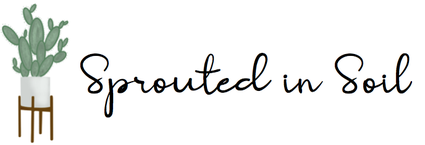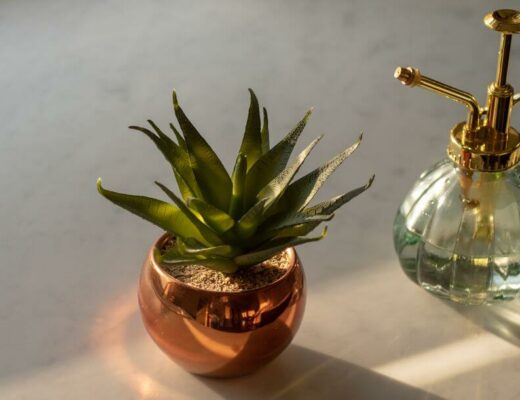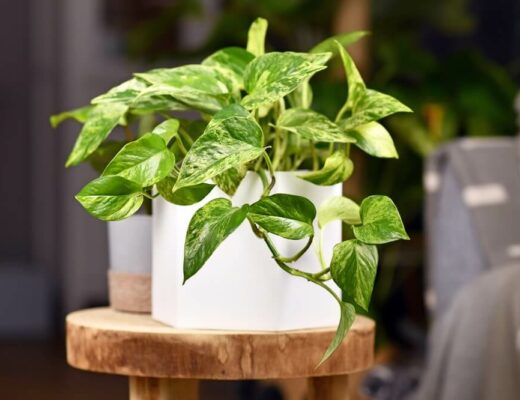Succulents and cacti naturally thrive in hot and arid places, like a desert. This has helped to give these beautiful plants a practically risk-free care and maintenance rating that allows individuals who are not experienced gardeners to succeed in keeping these hardy plants healthy.
However, there are a handful of harmful succulent pests that can cause various problems such as systemic disease, stunted growth, rot and fungal infections. In some instances, these pests may even kill the plant.
In this article, I’ll address the most common succulent pests that houseplant owners face, how to identify and prevent these pests and how to treat a succulent that has a pest infestation.
Table of contents
What are pests and why are they an issue?
Pests that infest household succulents refer to insects, parasites and various microbial agents that cause harm or disease. Typically, cacti and succulents pose few problems, however pests can pose serious risk to the plant’s continued health and well-being.

The majority of succulent pest infestations are usually caused by three things: overwatering your succulent, not giving them the proper amount of sunlight each day and/or improper soil. These factors make a succulent more susceptible to pests which can lead to systemic infections. This further weakens the plant, making it even more susceptible to damage from other common succulent pests and bacterial and fungal infections.
You can see how this can become a vicious circle. These harmful risks increase over time if the initial pest infestation or damage is not resolved swiftly.
With all that said, let’s discuss the most commonly seen pests on succulents, how to identify them and the ways to treat the issues!
Common Succulent Pests
There are several types of pests that can attack succulents leading to larger problems. These pests include mealybugs, scale, spider mites, gnats and aphids among others.
It is important to pay attention to your succulents. Check them often for signs and symptoms of common pests. Obviously if you see numerous bugs on your succulents, you clearly have an issue! Sometimes, however, these succulent pests can be a bit more tricky to find.This diligence can help catch pest issues early and allow you to provide the appropriate treatment and to resolve the problem quickly. All too often, these pest problems are already too advanced by the time the plant owner realizes there is a dire concern.
Mealybugs
What are they?
Mealybugs come in several forms, but all have soft bodies with a protective surface that is waxy in nature. These common succulent pests are oval in shape and about 4mm long. They can be identified by their white color that has the texture of a cotton ball.

Some mealybugs attach to the roots of the succulents and live just below the soil surface while others anchor themselves to the leaves. These pests clump together forming a white mass that is often mistaken for a fungal infection at first glance.
Root mealybugs feed on the plant root juices by sucking the substances out. These pests can make your beloved succulent plant much more susceptible to diseases such as bacterial and fungal infections.
Mealybugs that enjoy leaves will most often be clustered together on the plant’s spine or along the veins located on the plant’s leaves. Look for them on the underside of the leaves and near the root or stem of the plant.
Signs and symptoms
The most obvious sign that your succulent is infested with mealybugs is the appearance of the small, white insects themselves. These pests are small and move slowly, so you will likely not see much movement.

Mealybugs tend to cluster together on the spine and leafy veins or just under the soil surface near the roots. They may also lay eggs on your succulent which will appear as a fuzzy, cottony mass.
Succulents with a mealybug problem will have yellowed leaves that drop often and, with large infestations, may have stunted growth.
Mealybugs produce a sugary substance called honeydew that will appear as a waxy deposit on the succulent. As a result, your succulent has a higher chance of succumbing to a fungal infection. So if you notice a black moldy buildup on your plant, check for mealybugs as this may be the root cause.
How to treat
Dip a cotton Q-tip in rubbing alcohol and swab the affected area. You should carefully dislodge any cottony growth. You may also dilute the rubbing alcohol with water in a spray bottle if desired.

When dealing with a smaller infestation, check daily on the status of the treatment results. Repeat the above treatment once a week until the mealybugs and related symptoms are completely resolved.
If the mealybugs are feeding on the roots, you must gently remove as much soil from the roots and as much of the infected succulent as possible. Drench the remaining roots in neem oil, or try soaking them in hot water heated to 115°F.
Always sterilize the pot or container! Do this by washing with a mixture of one part bleach to nine parts water.
Mealybugs can spread from plant to plant, so isolate any new plants or those with mealybug signs and symptoms to curtail the spread of these pests.
Scale
What are they?
Scale are insects that feed on sap and come in two general categories, soft scale and armored scale. Soft scale are much easier to treat whereas armored scale, which have a tough outer coating, are more difficult.

If that does not resolve the problem, treat the scale like mealybugs with rubbing alcohol or try running water over the plant to dislodge the insects you find on your succulents. There are also insecticides that may be used if the problem is severe. Care should be taken with these stronger treatment options, as they can harm both humans and animals.
Signs and symptoms
When looking for scale on succulents, search for these brown, white or other colored dots on undersides of leaves and along the stem. These round shaped pests often look like brown dots that are attached to the plant’s stem or leaves.
Because scale insects feed on the plant parts, leaves and stems will appear deflated or limp.
You may also see an increase in other common succulent pests, such as ants or gnats, or in fungal growth.
How to treat
Scale insects should be carefully scraped off with a fingernail or a blunt knife. If you are unable to scrape off all of the scale insects without damaging the plant, treat isolated areas with a rubbing alcohol solution. If the infestation is more widespread, you can put rubbing alcohol in a spray bottle to treat larger areas of a succulent.

As with any succulent pest infestation, isolate the affected plant!
Spider Mites
What are they?
Spider mites are tiny succulent pests that often resemble grains of pepper, often appearing dark brown or black.
You will often first identify a spider mite problem by the fine webbing these pests create. Another sign is the appearance of clusters of white eggs which quickly hatch within hours of being laid.

Signs and symptoms
Spider mites often leave a silky weblike substance behind, usually between the base of stems and leaves or around the bottom of the succulent. Mites often appear like dust particles if the plant is disturbed.
A succulent infested with spider mites will show signs of neglect such as yellowing and dropped leaves.

How to treat
First (yes, this is repetitive) isolate your plant from others nearby, and do a complete inspection. Treat using a solution of rubbing alcohol on a cotton tipped applicator or in a spray bottle for larger issues.
Neem oil is another great option.
Gnats
What are they?
Gnats are small winged insects that are usually found when a plant has a fungal infection. These pests are drawn to the moisture when the plant has been overwatered or has poor soil drainage. These often look like small fruit flies or mosquitoes that tend to hang around your plant by the base near the soil.

The gnats themselves do not harm the plant. Their larvae, however, do. Larvae are deposited within the soil and feed on the succulents as they grow. Fungal infections, which often accompany gnat infestations, are also harmful to your plant and can quickly lead to root rot and succulent death.
Signs and symptoms
The most obvious sign of this succulent pest is the gnat itself. Keep watch for small black or flies that hang your plant. They tend to hover near the base of the plant, near or above the soil.

How to treat
Overwatering, high humidity, poorly draining soil and pots without drainage holes are the main culprits leading to gnats infesting your succulent.
Sticky gnat traps are a great way to start treating a gnat problem. Gnat traps can be stuck in the soil and trap gnats as they fly to and from their cozy home in the succulent’s soil, or they can be placed around your house to catch the ones that venture further away!

Spraying the succulent’s soil with rubbing alcohol is a very quick and effective way to kill gnats. To avoid causing damage to the succulent’s root system, don’t drench the soil with rubbing alcohol. A light coating should do the trick.
Diatomaceous earth is a powder that works wonders on killing gnats. It is a fine powder made from a siliceous sedimentary rock. Sprinkle a light coating directly on soil. Within 1-3 weeks, your gnat problem will be a problem no more!
Aphids
What are they?
Aphids are forms of greenflies and blackflies that commonly attack vulnerable succulent plants to feast on the sap of the infested succulent. Like other pests, aphids also secrete a sweet honeydew substance that draws other insects and fungi which can create even more problems for your plant.

Signs and symptoms
These small pests are dark green, brown or black. When an infestation is underway, there could be lots of ants that are wandering around your plant due to the honeydew secreted by the aphids. These ants are often indications of aphids and other plant pests that may be present.
The aphids may be seen on new cacti growth areas and may be spotted on flowers, buds, leaves and other areas of the plant as well.
How to treat
Using a rubbing alcohol spray is extremely helpful in eliminating this succulent pest! Spray all over or soak cotton applicators to remove the aphids from hard to reach nooks and crannies.
Prevention
Dealing with pests on succulents can be frustrating, but you can fight back! The best way to protect your cherished succulent plants from harm as a result of pests and disease is to prevent the situation from occurring using the following measures. Always keep new plants in isolation until sure that your young plant isn’t carrying a pest problem into your home or garden setting.

Make it a weekly habit to inspect your plants thoroughly. Pests can do quite a lot of damage before they are even noticed. This is because most of the destruction takes place in areas of the plant that are hidden.
If any signs of a pest infestation are present, isolate your plant immediately and begin treatment. Use tweezers or carefully remove any noticeable insects like mealybugs, aphids, spider mites and other pests. It might help to carefully remove the plant from its pot and give it a gentle bath by running water over any suspicious areas. Dry thoroughly and repot your plant with new soil in a newly sanitized pot.

Always research the care instructions for any new succulent that you bring home. These guidelines will give detailed steps for proper light, temperature levels and growing zones if planting outdoors along with correct watering and soil composition details. If unsure about care, check out our care guides or inquire about your plant at a local plant nursery or garden center.
Proper watering and moisture content
Succulent plants are used to dry and warm temperatures. This means that they should not be watered as often as other plants. Succulents should not be overwatered, and the soil should not be kept moist. Doing so will increase the chances of a fungal or bacterial infection or pest infestations.
These plants also prefer being in natural sunlight with warmer but drier temperatures and environmental conditions. Be sure to allow a potted succulent plant the proper soil with adequate water drainage. To achieve optimal water drainage, check out our post on overwatered succulents!
Good grooming and how to groom your succulent
Good grooming habits when caring for your succulents can increase chances of keeping your plants healthy and pest free. Always remove dead leaves or flowers, and do not leave them to pile up underneath your plant. This could trap moisture setting the plant up for fungal invasion and other pest problems.

If there are signs of rot, you will need to remove any portions that are slimy or otherwise obviously affected. When a rot situation is serious, the plant might be too sick to save. Some succulents may be able to be repotted if given intense TLC. Ensure that the plant is not near others.
Proper fertilization
Succulents need a balanced fertilizer to keep the plant strong and healthy. When adding additional fertilizer be sure to consider the following:
- Correct time of year
- Correct dosage and dilution
- Correct amount of nutrients
Incorrect fertilization techniques can increase a plant’s susceptibility to pests. Use the soil composition recommended by any care instructions that came with your plant.
Preventative neem oil
Neem oil is an organic insecticide option, and most succulent plants tolerate this treatment especially if they are in good health. Natural remedies and treatments are preferred over systemic and other harsher insecticides.
Spray neem oil lightly on the leaves, stems and soil twice a month as a preventative measure.
Spot-test neem oil before using on an entire succulent or cactus to ensure that it won’t be too harsh for the plant. This should only be applied in small amounts following instructions for treatment precisely. Then, keep your plant away from direct sunlight for several days following each treatment.
Wrapping up
Succulents and cacti are a beautiful way to style your home but they can come with pest problems. I hope you use this information to keep your houseplants happy and healthy! And I truly hope this didn’t make you feel too itchy!




